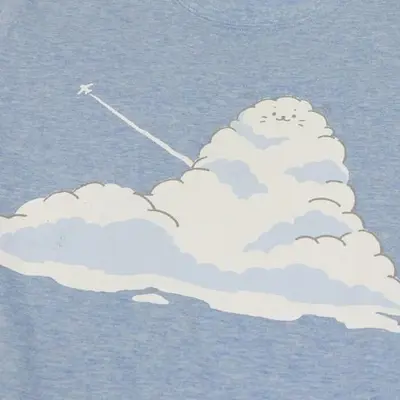Theme Documentation - Content

Find out how to create and organize your content quickly and intuitively in DoIt theme.
1 Contents Organization
A few suggestions to help you get a good looking site quickly:
- Keep post pages in the
content/postsdirectory, for example:content/posts/my-first-post.md - Keep other pages in the
contentdirectory, for example:content/about.md - Local resources organization
There are three ways to reference local resources such as images and music:
- Using page resources in page bundles.
You can reference page resources by the value for
Resources.GetMatchor the filepath of the resource relative to the page directory directly. - Store resources in the assets directory, which is
/assetsby default. The filepath of the resource to reference in the post is relative to the assets directory. - Store resources in the static directory, which is
/staticby default. The filepath of the resource to reference in the post is relative to the static directory.
The priority of references is also in the above order.
There are many places in the theme where the above local resource references can be used,
such as links, images, image shortcode, music shortcode and some params in the front matter.
Images in page resources or assets directory processing will be supported in the future. It’s really cool!
2 Author Settings
You are encouraged to create your author profile under mysite/data/authors as author_name.toml. In your profile, you can specify the link, email and name with i18n support.
Here is an example for Alice.toml:
link = "https://alice.example.com"
email = "alice@example.com"
name = "Alice"
[zh-cn]
name = "爱丽丝"After creating your author profile, you can specify your name in the front matter of your posts. After that, the post will be automatically signed with your name and link, and will be classified according to its author.
---
authors: [Alice]
---You can also specify multiple authors for one post.
---
authors: [Alice, Bob, Catherine]
---3 Front Matter
Hugo allows you to add front matter in yaml, toml or json to your content files.
page part in your site configuration are inconsistent.Here is a front matter example:
---
title: "My First Post"
subtitle: ""
date: 2020-03-04T15:58:26+08:00
lastmod: 2020-03-04T15:58:26+08:00
draft: true
authors: []
description: ""
license: ""
images: []
tags: []
categories: []
series: []
series_weight: 1
seriesNavigation: true
featuredImage: ""
featuredImagePreview: ""
hiddenFromHomePage: false
hiddenFromSearch: false
twemoji: false
lightgallery: true
ruby: true
fraction: true
linkToMarkdown: true
linkToSource: false
linkToEdit: false
linkToReport: false
rssFullText: false
license: ''
toc:
enable: true
auto: true
code:
copy: true
# ...
table:
sort: true
# ...
math:
enable: true
# ...
mapbox:
accessToken: ""
# ...
share:
enable: true
# ...
comment:
enable: true
# ...
library:
css:
# someCSS = "some.css"
# located in "assets/"
# Or
# someCSS = "https://cdn.example.com/some.css"
js:
# someJS = "some.js"
# located in "assets/"
# Or
# someJS = "https://cdn.example.com/some.js"
seo:
images: []
# ...
outdatedArticleReminder:
enable: false
# ...
sponsor:
enable: false
# ...
related:
enable: false
count: 5
---title: the title for the content.
date: the datetime assigned to this page, which is usually fetched from the
datefield in front matter, but this behaviour is configurabl in the site configuration.lastmod: the datetime at which the content was last modified.
draft: if
true, the content will not be rendered unless the--buildDrafts/-Dflag is passed to thehugocommand.description: the description for the content.
license: the special license for this content.
images: page images for Open Graph and Twitter Cards.
tags: the tags for the content.
categories: the categories for the content.
series_weight:
define the position of the post in the series.
featuredImage: the featured image for the content.
featuredImagePreview: the featured image for the content preview in the home page.
hiddenFromHomePage: if
true, the content will not be shown in the home page.hiddenFromSearch:
if
true, the content will not be shown in the search results.lightgallery: if
true, images in the content will be shown as the gallery.ruby:
if
true, the content will enable the ruby extended syntax.fraction:
if
true, the content will enable the fraction extended syntax.linkToMarkdown: if
true, the footer of the content will be shown the link to the original Markdown file.linkToSource:
if
false, turn off the view source link in the footer. You can set it to the link to the source file of the post. Use the magic variable{path}to specify the relative path of the post, for example, the{path}for this post isposts/theme-documentation-content/index.en.md.linkToEdit:
if
false, turn off the edit this page link in the footer. You can set it to the link to edit the page. Use the magic variable{path}to specify the relative path of the post, for example, the{path}for this post isposts/theme-documentation-content/index.en.md.linkToReport:
if
false, turn off the report issue link in the footer. You can set it to the link to report issues about the page. Use the magic variables:{path}to specify the relative path of the post, for example, the{path}for this post isposts/theme-documentation-content/index.en.md,{title}to specify the title of the post, for example, the{title}for this post isTheme Documentation - Contentand{url}to specify the url of the post, for example, the{url}for this post ishttps://hugodoit.pages.dev/theme-documentation-content/.rssFullText:
if
true, the full text content will be shown in RSS.enableLastMod: if
true, the last modified time will be shown in the header.enableWordCount: if
true, the word count will be shown in the header.enableReadingTime: if
true, the reading time will be shown in the header.toc:
the same as the
params.page.tocpart in the site configuration.code:
the same as the
params.page.codepart in the site configuration.table:
the same as the
params.page.tablepart in the site configuration.math:
the same as the
params.page.mathpart in the site configuration.mapbox:
the same as the
params.page.mapboxpart in the site configuration.share: the same as the
params.page.sharepart in the site configuration.comment:
the same as the
params.page.commentpart in the site configuration.library:
the same as the
params.page.librarypart in the site configuration.seo:
the same as the
params.page.seopart in the site configuration.outdatedArticleReminder:
the same as the
params.page.outdatedArticleReminderpart in the site configuration.sponsor:
the same as the
params.sponsorpart in the site configuration.related:
the same as the
params.page.relatedpart in the site configuration.
featuredImage and featuredImagePreview support the complete usage of local resource references.
If the page resource with name: featured-image or name: featured-image-preview is set in the front matter,
it is not necessary to set the parameter featuredImage or featuredImagePreview:
resources:
- name: featured-image
src: featured-image.jpg
- name: featured-image-preview
src: featured-image-preview.jpg4 Content Summaries
DoIt theme uses the summary of the content to display abstract information in the home page. Hugo can generate summaries of your content.

4.1 Automatic Summary Splitting
By default, Hugo automatically takes the first 70 words of your content as its summary.
You may customize the summary length by setting summaryLength in the site configuration.
If you are creating content in a CJK language and want to use Hugo’s automatic summary splitting, set hasCJKLanguage to true in your site configuration.
4.2 Manual Summary Splitting
Alternatively, you may add the <!--more--> summary divider where you want to split the article.
Content that comes before the summary divider will be used as that content’s summary.
<!--more--> exactly; i.e., all lowercase and with no whitespace.4.3 Front Matter Summary
You might want your summary to be something other than the text that starts the article. In this case you can provide a separate summary in the summary variable of the article front matter.
4.4 Use Description as Summary
You might want your description in the description variable of the article front matter as the summary.
You may add the <!--more--> summary divider at the start of the article. Keep content that comes before the summary divider empty. Then DoIt theme will use your description as the summary.
4.5 Priority Order of Summary Selection
Because there are multiple ways in which a summary can be specified it is useful to understand the order. It is as follows:
- If there is a
<!--more-->summary divider present in the article but no content is before the divider, the description will be used as the summary. - If there is a
<!--more-->summary divider present in the article the text up to the divider will be provided as per the manual summary split method. - If there is a summary variable in the article front matter the value of the variable will be provided as per the front matter summary method.
- The text at the start of the article will be provided as per the automatic summary split method.
5 Basic Markdown Syntax
This part is shown in the basic markdown syntax page.
6 Extended Markdown Syntax
DoIt theme has some extended syntax elements for you to write articles.
6.1 Emoji Support
This part is shown in the emoji support page.
6.2 Mathematical Formula
DoIt theme supports mathematical formulas based on $ \KaTeX $.
Set the followings in your site configuration to enable mathematical formulas.
[markup]
[markup.goldmark]
[markup.goldmark.extensions]
[markup.goldmark.extensions.passthrough]
enable = true
[markup.goldmark.extensions.passthrough.delimiters]
block = [['\[', '\]']]
inline = [['\(', '\)']]
[params]
[page]
[page.math]
enable = true
blockLeftDelimiter = '\['
blockRightDelimiter = '\]'
inlineLeftDelimiter = '\('
inlineRightDelimiter = '\)'
copyTex = true
mhchem = true6.2.1 Block Formula
The default block delimiters is \[ \]:
\[ c = \pm\sqrt{a^2 + b^2} \]
\[ f(x)=\int_{-\infty}^{\infty} \hat{f}(\xi) e^{2 \pi i \xi x} d \xi \]The rendered output looks like this:
6.2.2 Inline Formula
The default inline delimiters is \( \):
\( c = \pm\sqrt{a^2 + b^2} \) and \( f(x)=\int_{-\infty}^{\infty} \hat{f}(\xi) e^{2 \pi i \xi x} d \xi \)The rendered output looks like this:
and
6.2.3 Copy-tex
Copy-tex is an extension for $ \KaTeX $.
By the extension, when selecting and copying $ \KaTeX $ rendered elements, copies their $ \LaTeX $ source to the clipboard.
Set the property copyTex = true under [params.math] in your site configuration to enable Copy-tex.
Select and copy the formula rendered in the previous section, and you can find that the copied content is the LaTeX source code.
6.2.4 mhchem
mhchem is an extension for $ \KaTeX $.
By the extension, you can write beautiful chemical equations easily in the article.
Set the property mhchem = true under [params.math] in your site configuration to enable mhchem.
\[ \ce{CO2 + C -> 2 CO} \]
\[ \ce{Hg^2+ ->[I-] HgI2 ->[I-] [Hg^{II}I4]^2-} \]The rendered output looks like this:
6.3 Ruby Annotation
An extended Markdown syntax for ruby annotation is supported in DoIt theme:
[Hugo]^(An open-source static site generator)The rendered output looks like this:
Hugo
6.4 Fraction
An extended Markdown syntax for fraction is supported in DoIt theme:
[Light]/[Dark]
[99]/[100]The rendered output looks like this:
Light/Dark
90/100
6.5 Blockquote
DoIt supports GitHub-style blockquotes:
> [!NOTE]
> Useful information that users should know, even when skimming content.
> [!TIP]
> Helpful advice for doing things better or more easily.
> [!IMPORTANT]
> Key information users need to know to achieve their goal.
> [!WARNING]
> Urgent info that needs immediate user attention to avoid problems.
> [!CAUTION]
> Advises about risks or negative outcomes of certain actions.The rendered output looks like this:
Useful information that users should know, even when skimming content.
Helpful advice for doing things better or more easily.
Key information users need to know to achieve their goal.
Urgent info that needs immediate user attention to avoid problems.
Advises about risks or negative outcomes of certain actions.
6.6 PlantUML Support
DoIt supports PlantUML diagrams:
```plantuml {format="svg" title="example"}
@startuml test
Bob -> Alice : hello
@enduml
```The rendered output looks like this:
You can customize the rendered image with following optional parameters:
| option | description | type |
|---|---|---|
format | output format of PlantUML renderer, either svg (default) or png | string |
title | will be rendered as attribute alt of tag <img> | string |
6.7 WaveDrom Support
DoIt supports WaveDrom diagrams:
```wavedrom
{signal: [
{name: 'clock', wave: 'p................'},
{name: 'hwrite', wave: 'x0x.0x..0.x.0.x..'},
{name: 'htrans', wave: 'x3x.4x..5.x.6.x..', data: '2 2 2 2'},
{name: 'haddr', wave: 'x3x.4x..5.x.6.x..', data: 'A0 A1 A2 A3'},
{},
{name: 'hready', wave: 'x1.x101x01.x0101x'},
{name: 'hrdata', wave: 'x.3x..4x..5x...6x', data: 'D0 D1 D2 D3'},
],
head: {tock: 1},
gaps: '( . . 1 . s . 1 s . . 1 s . s . )',
foot: {text: 'reads'}
}
```The rendered output looks like this:

